
One of the most important life skills for anyone to master is time management. Keeping track of everything that we have to do and carving out the time to get it all done can be a real struggle. Try these time management strategies and techniques, plus find helpful tools for staying on track.
Jump to:
General Time Management Strategies
These time management strategies work for everyone, helping you set goals and prioritize, then set a schedule to get things done.
Visualize the big picture
Use a calendar of some type to lay out all your big-picture goals for a year, month, or week. Include major projects and assignments, as well as school and personal events. This is your place to get an overview of everything that’s on your plate. Keep items to broad descriptions: “History Project” or “Spring Play Opening Night.” You’ll get into the details next.
Break it down
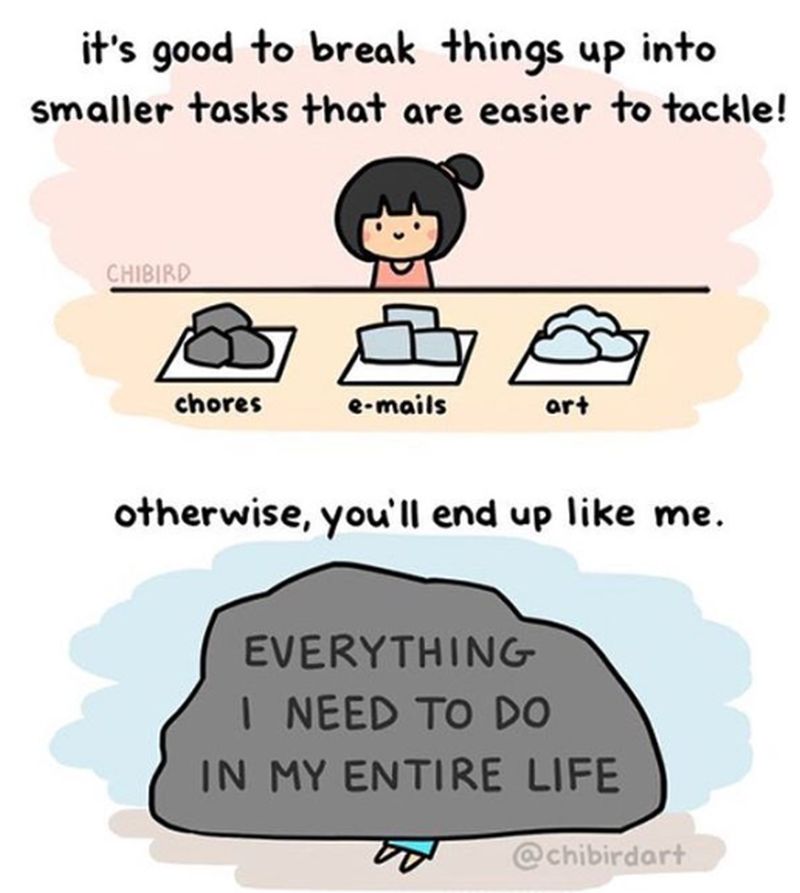
The next step is to take major projects and assignments and break them down into smaller, more manageable parts. This is an incredibly effective way to overcome that feeling of “I’ll never get this all done!” It also prevents procrastinating on an entire project until the very last minute. Set smaller, more manageable goals with their own due dates in advance of a complete project or event.
For example, imagine your big-picture calendar says “History Project Due Feb. 23.” Breaking that down could look like this:
- Choose topic and presentation method: Jan. 9
- Initial research: Jan. 10-30
- Presentation outline: Jan. 31
- Write presentation script: Feb. 1-5
- Create visual aids: Feb. 6-12
- Rehearse presentation: Feb. 13
- Fine-tune presentation: Feb 14-16
- Final rehearsals: Feb. 17
- Give history presentation: Feb. 23
At first, this method might feel a little overwhelming, because it may make you feel like there’s too much to get done. But as you use it, you’ll see how it can actually make you feel more prepared and in control, and make your time easier to manage.
Determine priorities
Sometimes it’s simply true: You don’t have enough time in a day to get all the things done that you’d like to. That’s where setting priorities becomes vital. In the “Time Management Techniques” section below, you’ll find several different ideas for determining the priority of different items on your lists.
Once you’ve figured out which items are the most important, try a color-coding system to indicate which items get a higher priority. This will help you identify at a glance what you need to do now and what can wait until another day.
Make daily to-do lists
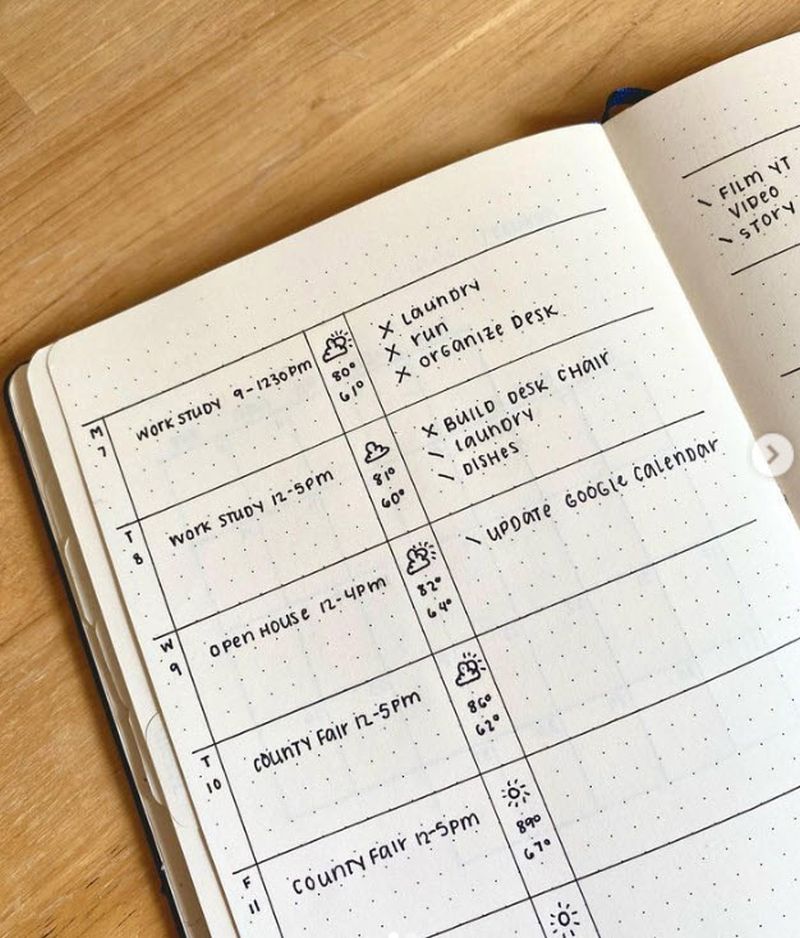
Make it a habit to start each day by creating a to-do list. (Not a morning person? You can do this the night before too.) Include high-priority items, as well as things you’d like to do but may not have to complete. Throughout the day, as you complete an item, revisit your list and check it off. It’s incredibly satisfying to cross things off, and checking in with your list a few times a day ensures you don’t forget important things.
Limit multitasking
Today’s world places a lot of value on multitasking (doing several things at once). But when you’re doing multiple things at the same time, you’re probably not doing any of them well. So keep your multitasking to a minimum. When it’s time to work on something, set your focus to that particular thing. Other stuff can wait.
But some multitasking is OK. For instance, you might throw your clothes in the washing machine, then work on your math homework while waiting for them to be ready for the dryer. Later on, you could fold and put away the laundry while practicing conjugating Spanish verbs out loud. This type of multitasking works because the physical tasks are ones that don’t require much concentration, leaving your brain free for academic subjects.
On the other hand, avoid something like trying to listen to a podcast for your history class while also doing your math homework. Your attention won’t be fully on each, and your learning will suffer.
Remove distractions
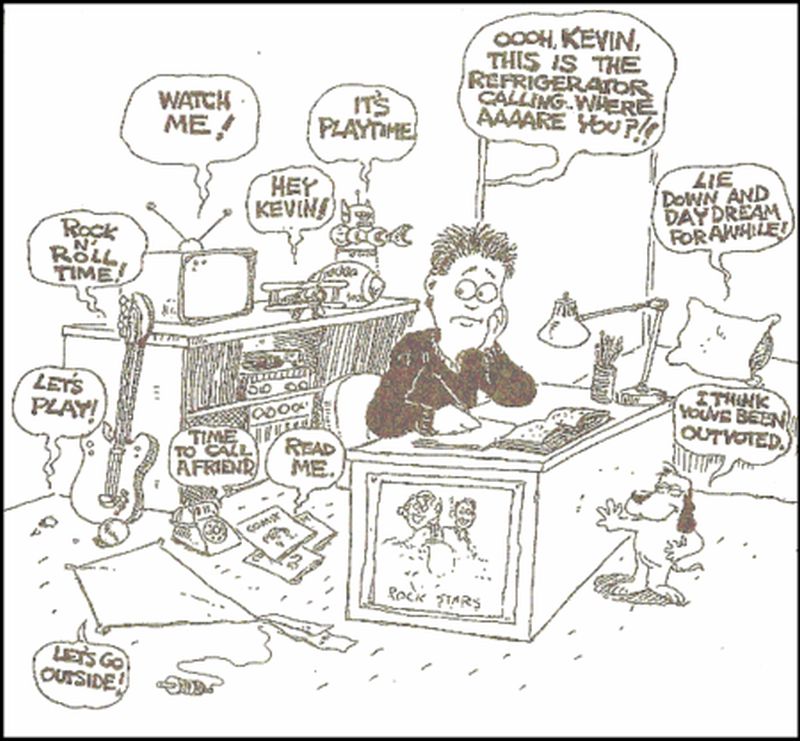
Some people are capable of deep focus no matter what’s going on around them. Most of us, though, need to find ways to remove distractions when it’s time to get down to work. Here are some examples to try:
- Turn off your phone, or set it to alert you only in case of emergencies.
- Wear noise-cancelling headphones or earplugs to block out distracting sounds. A white-noise machine or app can help with this too.
- Close miscellaneous tabs in your web browser (like social media or news sites), and use only the tabs you need for your work.
- Go into a quiet room and shut the door. Ask friends and family not to disturb you.
- Check your to-do list before you start to make sure you’re on track. Then, clear your mind of other projects or tasks, and focus on what’s at hand.
Do an end-of-day review
At the end of each day, sit down with your to-do list. Was there anything you didn’t get to? Move it to another day. Did you feel too rushed today? Think about how you might make tomorrow run a bit more smoothly. Where do you stand in terms of your big-picture goals? Take a few minutes to adjust any plans accordingly.
Try a time audit
It’s OK if you don’t get to everything on your list every day. But if you find that there’s never enough time to get things done, you might benefit from a time audit. Over the period of a week or two, write down exactly how you spend your time, hour by hour. Then, look it over and see if you can identify problem areas. You might need to cut down on some optional activities and give that time to high-priority items instead. Learn how to do a time audit here.
Time Management Techniques
The time management strategies we’ve talked about so far are general ways to stay on track and get stuff done. But there are multiple ways to approach some of these strategies, especially when it comes to actually settling down to work. Check out these popular time management techniques and choose one or more that seem right for you.
Eisenhower Decision Matrix
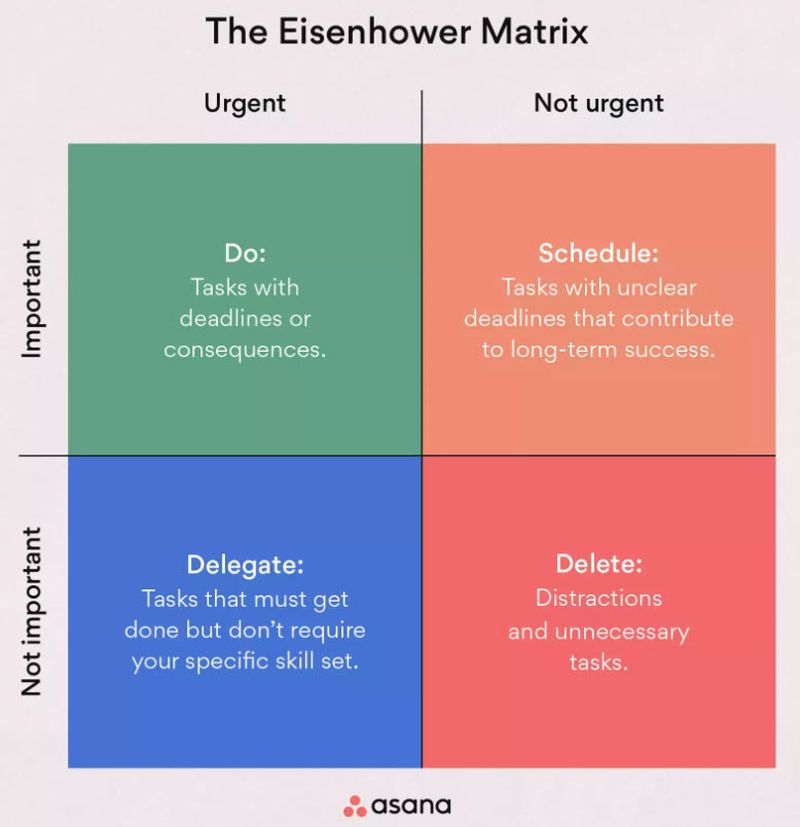
President Eisenhower developed this matrix and used it to help him prioritize his tasks. He looked at each item to evaluate it by importance and urgency, then broke them into four categories:
- Do First: These are urgent, important tasks with high priority.
- Schedule: These are important tasks that aren’t quite as urgent.
- Delegate: You may be able to delegate less important but still urgent tasks to someone else.
- Don’t Do: These non-urgent, unimportant items can be eliminated entirely or postponed indefinitely.
Here are some possible student examples for each category:
- Do First: Homework that’s due tomorrow takes top priority, as might doing laundry if you’re out of clean clothes.
- Schedule: Set aside time (see Time Blocking) for smaller parts of long-term projects, such as research time or writing an outline. That could be today or one day in the near future.
- Delegate: Students aren’t always able to delegate their tasks, but they can ask for help. For example, if your schedule is incredibly tight, you could ask your dad if he’d be willing to throw your clothes in the dryer when the washer is done.
- Don’t Do: These are often bad habits you need to break, like surfing the web aimlessly instead of working, or texting your friends for hours instead of doing your chores.
ABCDE Method
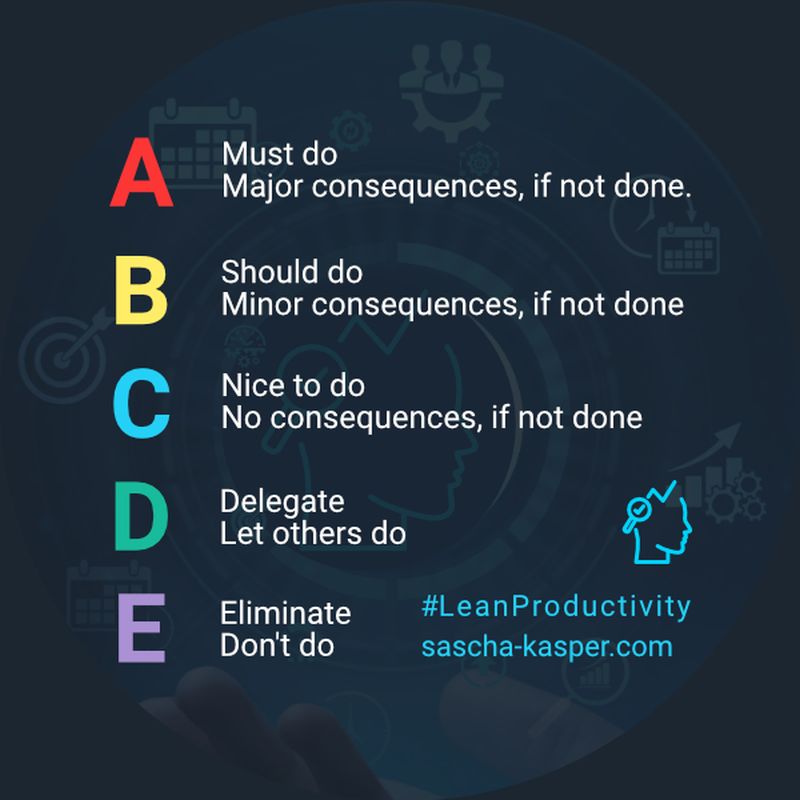
This is another time management strategy for prioritizing the tasks at hand. Assign each item a letter:
- A: Highest priority
- B: Should do soon, if not today
- C: Could do, but no serious consequences if not done
- D: Delegate or ask for help
- E: Eliminate from your list
This is very similar to the Eisenhower Matrix, with a little more flexibility around should-dos and could-dos. Learn more about the ABCDE method here.
Most Difficult First (Eat That Frog)
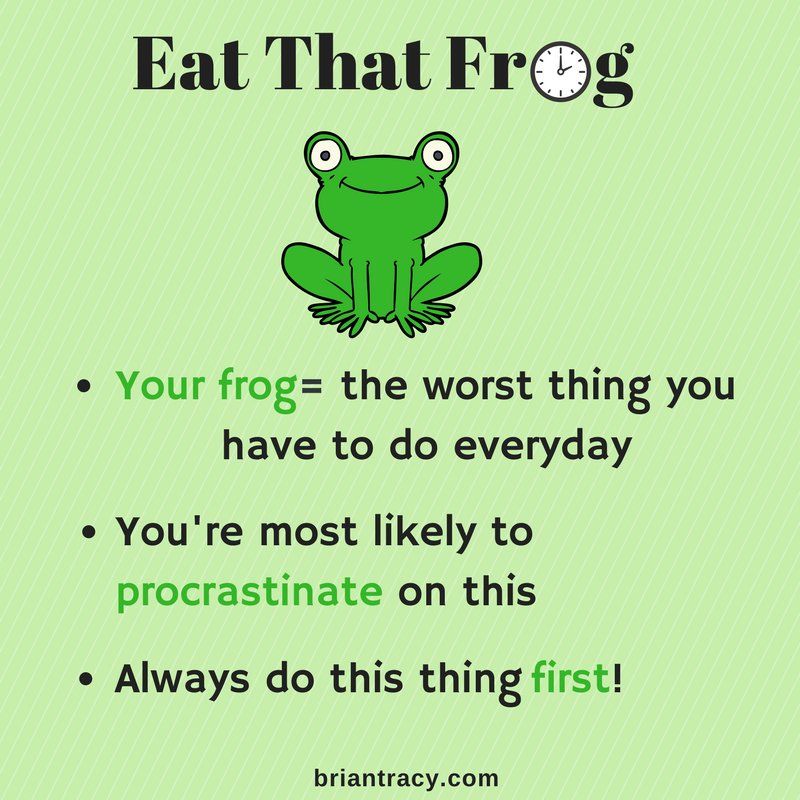
This method is based on a quote often attributed to Mark Twain: “If it’s your job to eat a frog, it’s best to do it first thing in the morning. And If it’s your job to eat two frogs, it’s best to eat the biggest one first.”
In other words, don’t put off the biggest, hardest tasks. Get them out of the way first. Then, everything else you have to do will seem easy in comparison.
For some people, though, this concept can be counterproductive. If you’re already feeling overwhelmed, tackling something extremely difficult can be too much and cause you to shut down entirely. In that case, it’s just fine to choose smaller, simpler items. The key is to make progress, one step at a time.
Pomodoro Technique
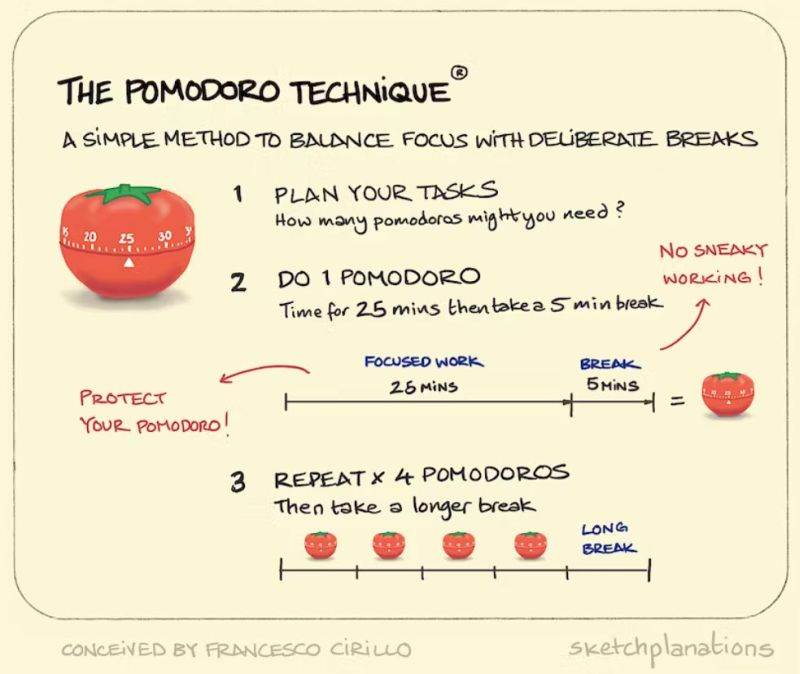
The Pomodoro Technique is a simple time management method: You work for 25 minutes at a time, then take a 5-minute break to rest and recharge. Simply set a timer for 25 minutes, and focus on one single task until it goes off. Then, you can spend 5 minutes stretching, resting your eyes, or checking your social media feeds. When the 5 minutes are up, set the timer for another 25 minutes, and get back to work. If you do four 25-minute sessions in a row, take a longer break afterwards. Learn more about the Pomodoro Technique here.
Flowtime
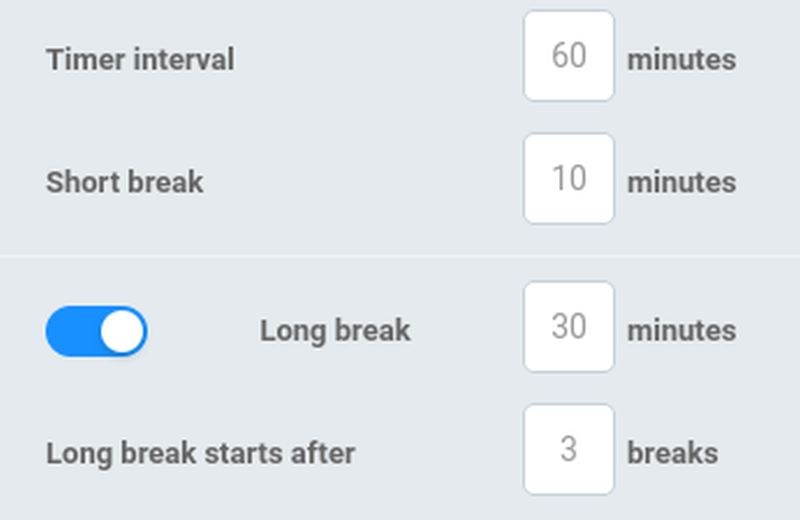
If 25 minutes seems too short and you’d like a little more uninterrupted time, try Flowtime instead. This stretches out both the work and break time proportionally. If you work for 25-50 minutes, take an 8-minute break. For 50-90 minutes, you get a 10-minute break. And if you’ve been at it for more than 90 minutes, take 15 minutes to recharge. Learn about Flowtime here.
Timeboxing
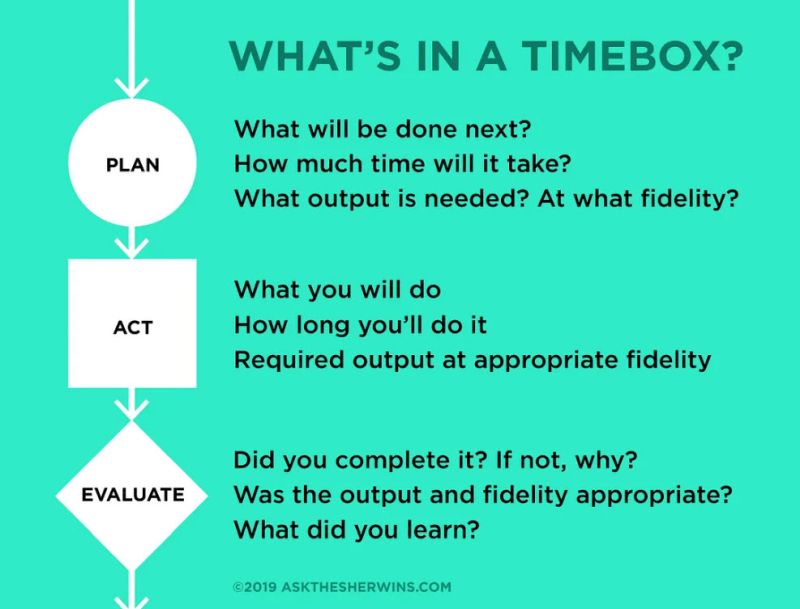
Parkinson’s Law says that work will always expand to fill the amount of time available. Timeboxing seeks to shrink tasks back to the size they truly need to be. When you timebox, you set a specific amount of time for a task and complete it within that time.
In other words, you might look over your study planner and decide that you need one hour for tonight’s geometry and chemistry assignments, plus you’d like to spend another hour working on your English essay.
Set a timer and work on your geometry and chemistry for an hour, with no other distractions. When the timer goes off, reassess and adjust your goals as needed. Since you have to finish that homework tonight, you’ll probably need to add more time if you’re not finished.
Your English essay isn’t due for two weeks, though, so if you’ve boxed out one hour for working on it today, that’s all you need to do. Set a timer, determine your goals for day, and get to work. When the timer goes off, you’re done for today.
Time Blocking
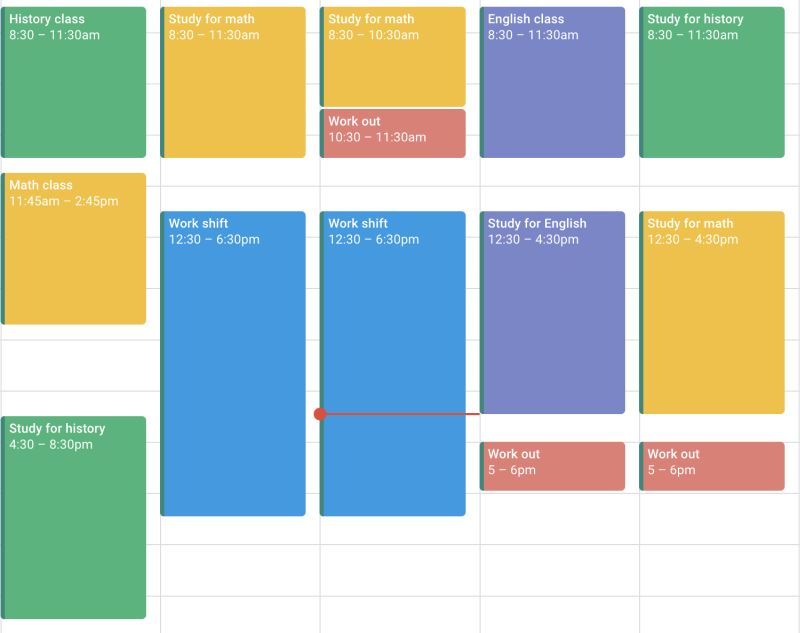
This method is similar to timeboxing, but it involves setting blocks of time aside on your calendar for specific tasks. For example, you might block out 4 p.m. to 5 p.m. each day for daily homework, 5 p.m. to 6 p.m. for working on your biology research paper, and 7 p.m. to 7:30 p.m. for piano practice. Some people like to start each day by blocking time out on their calendar, figuring out how they’ll make the most of their time. Find out more about time blocking here.
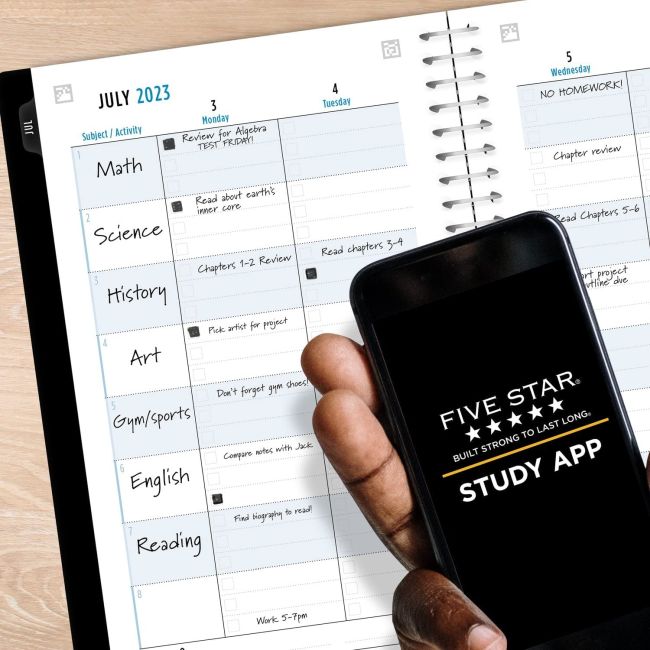
Once you’ve selected some time management strategies to try, you’ll find plenty of tools to help make them work. Check out these top time management tools for students, from planners to timers and beyond.
Student Planners
Traditional paper planners come in a variety of styles, with some made especially for students. The most important thing is to choose one you’ll actually use, and keep it on hand at all times. See our selection of the top student planners here.
Planner Apps
Planner apps and online calendars are nice because you have access to them everywhere you go. For students, we really like:
See more details on each of these here, plus more options.
Study Planners
Study planners are specific to academics, and they are a simple way to keep track of both short-term and long-term assignments, projects, and more. Check out these free printable options:
Time Management Apps
Planner apps are a good start, but other time management apps can help you stay on track by eliminating distractions or setting time limits. Here are a few to try:
- Pomofocus: A free online 25–5 timer with the ability to add a task list for each work segment
- Rize: An AI productivity coach that uses time tracking to improve your focus and build better work habits
- Forest: Eliminate distractions, stay on task, and grow a digital forest to celebrate your achievements
Bullet Journal
Bullet journaling has a lot of benefits, and some page setups are especially good for time management:
Check out our big roundup of bullet journal ideas here.






